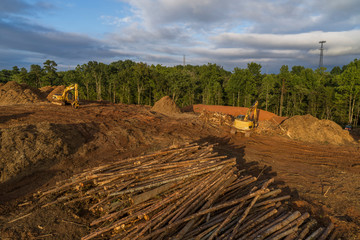Although every AC system is different, there are some common issues that can be repaired. These include a tripped circuit breaker, dirty air filter, and a blown capacitor.
Understanding these components can help you communicate more effectively with your HVAC repair technician. Also, routine maintenance extends the lifespan of your AC system, reduces energy bills, and improves indoor air quality. Contact HVAC Round Rock for professional help.
Thermostats are essential to air conditioning operation, but they can be difficult to troubleshoot when issues arise. Thermostats can develop problems due to age, build-up of grime, and regular wear. It’s best to have a professional HVAC repair service examine your thermostat. They can determine whether it is a simple fix or if the unit needs replacement.
A broken thermostat can lead to problems with your AC system and can cause high energy bills and reduced efficiency. In some cases, it is more cost-effective to upgrade the thermostat rather than try to repair it. This is particularly true if the current thermostat has out-dated technology that isn’t offering smart features and programmable settings.
One of the most common thermostat problems is that it fails to respond to a temperature change. If the thermostat doesn’t turn on or off when you set it, it could be a sign of a failing control board or other internal components. A faulty display that flickers or shows partial information may also indicate a problem.
Another common thermostat issue is short cycling, which occurs when the system cycles on and off frequently. This wastes energy, damages the compressor, and causes wear on the unit’s components. It is important to keep the filter clean and change it regularly to avoid short cycling. If you have done these things and your thermostat still seems to have an issue, then there could be a problem with the internal sensor or other components that would require a delicate and expensive repair or replacement.
If you have a programmable thermostat, make sure it’s set to your preferred temperatures. It’s also important to keep the thermostat clean by wiping it gently with a cloth and cleaning around the edges. It’s also helpful to have a licensed HVAC technician examine the access panel and clean internal components each year to guarantee accurate temperature readings and proper functionality.
Sometimes, a thermostat can be fixed by simply resetting it. To reset your thermostat, locate the recessed reset button and press it in using a paper clip for about 5 seconds. This will reset the device and clear minor glitches that affect function.
Water Leaks
One of the most common problems that homeowners have to deal with is an AC unit leaking water. This can occur due to several reasons, including a clogged air filter, a damaged drain pan or low refrigerant levels. Fortunately, there are some things you can do to help resolve these issues.
During normal operation, the AC system’s evaporator coil absorbs heat from your indoor air, and that vapor turns into condensation. This condensation then drips into a drain pan, where it is normally sent to the outside of your home via a condensate drainage line. However, over time, the drain line can become clogged with dirt, dust, debris and other substances. This prevents the condensation from flowing away from the evaporator coil, and it can cause your AC to leak water.
Other causes of AC leaking water include a faulty float switch, low refrigerant levels or damage to the evaporator coils. In addition, high humidity in the Southeast can contribute to excessive condensation and a higher risk of leaking water from your air conditioning unit.
It’s important to have your HVAC system regularly inspected by a professional. An experienced technician will inspect your ductwork, return vents, air filters and fin coils to ensure proper airflow. They can also clean your coils, which may help reduce the likelihood of freezing and leaking.
If you notice a pool of water under your air conditioner, it’s best to turn off the unit as soon as possible to avoid any potential damage. In the meantime, you can check that your float switch is functioning properly and that no ice has formed on the evaporator coils. You can also try insulating your AC unit to help prevent a buildup of moisture, which could lead to a leaky evaporator coil.
If you do suspect your evaporator coils have froze, then you should call an AC repair service as soon as possible to prevent any further damage. They can defrost your coils, and then they can examine the condition of your drain pan for signs of rust or cracks that may need to be replaced.
Unusual Noises
Ideally, your air conditioning system is designed to operate in a near-silent manner. The only sounds you should hear are the click of the unit turning on, and the gentle whoosh of conditioned air escaping through your vents. Any other noises are a clear sign that something is wrong and that your system is in need of AC repair. Ignoring these warning signs can lead to extensive damage, higher utility bills, and reduced cooling efficiency.
Many of the most common AC noises are caused by loose or misaligned parts. The constant vibration and operation of the unit over time can cause screws, bolts, and fan blades to become loose. This can lead to rattling sounds as the parts move around or collide with each other. Often, tightening the loose components will resolve this problem. However, if the sound persists or the source of the noise isn’t easily located, it’s best to contact a professional for assistance.
High-pitched squealing noises typically indicate that there is dangerously high pressure in the compressor. This can cause major damage if not corrected, so turn off your unit and call a professional for immediate repairs.
Rattling noises are also a clear warning sign that something is loose or out of alignment within the system. The rattling sound can be caused by loose or missing screws, but it may also mean that the fan blades are becoming unbalanced or that debris is caught in the system. Depending on the severity of the issue, it may be possible to solve this problem by cleaning or replacing some components. However, if the rattling persists or appears to be getting worse, it’s important to contact a professional for help.
Buzzing noises are another common AC noise that can indicate an underlying problem with your electrical system or the fan motor. This type of noise is often a result of an overheated fan motor or a faulty compressor. In some cases, it can even be the sign of a refrigerant leak or other serious problem. A qualified HVAC technician can diagnose the problem and make any necessary repairs to prevent further damage or reduced performance.
Mold Growth
Mold spores naturally float in the air and land on warm surfaces, where they can eat organic materials such as wood and create off-putting odors. They can also stain surfaces and aggravate allergies and asthma. Unlike some types of mold, which are just annoying, black mold can cause serious health problems. Black mold is especially dangerous for people with pre-existing respiratory conditions. If you suspect black mold in your home, schedule a professional inspection immediately.
Most people think of bathrooms and damp basements as places where mold thrives, but your HVAC system can be another place where it may grow. The air conditioning unit blows a steady stream of spores throughout the home when it is running, and those spores can settle in hard-to-reach areas like the air conditioner coils or inside the ductwork.
Mold growth inside the air conditioning system is usually the result of moisture accumulation and inadequate maintenance. The best way to avoid this problem is to keep track of certain signs, such as musty odors coming from the vents or ductwork, dark spots on the air handler and discolored vent covers. It is also important to regularly test your home with instant-read mold tests, and to follow a routine maintenance plan that includes cleaning the drain line.
When air ducts are blocked with mold, they can’t properly circulate air. Mold spores can then get blown back into the living space where they’re more likely to cause symptoms, such as coughing, sneezing, itchy eyes and nose, so it’s crucial to take action when you notice any of these symptoms.
There are several different types of mold that can form in a home, including fusarium, chaetomium and others. Fusarium grows in places where there is a lot of moisture and is often found around leaks in roofs, windows and pipes. It can be black, green, yellow or orange in color. Chaetomium is a brown substance with a cotton-like texture, and it often appears on walls, but it can also be found in air ducts and vents. This type of mold is often difficult to identify because it tends to blend in with the surrounding dirt and dust.








